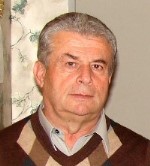as a basis for the mathematical theory of human behavior and activity:
Part 2. Change management in light of the principle of continuity, longevity and perpetuation of human life
FEATURED PAPER
By Pavel Barseghyan
Texas and Armenia
Abstract
The transformation of the principle of continuity, longevity and perpetuation of human life into a mathematical description of the behavior and activity of human systems of fundamental nature in the form of equations of state opens up serious prospects for the further development of the field of sociodynamics.
For this purpose, further substantiation of the method of equations of state of life and activity of people is necessary, as well as the expansion of the field of their applications for solving urgent problems of organizational science.
In this sense, it is very important to consider the course of human life as a stream of changes within the framework of the principle of continuity, longevity and perpetuation of human life, with the goal of conceptually and mathematically linking this principle with the methodology of change management.
This approach makes it possible to reconsider a number of fundamental problems in the field of change management, including the mathematical problems of change analysis and synthesis.
The second part of the work is devoted to further substantiation of the method of equations of state of human systems and the applications of this method in the field of change management.
Introduction
In order to reliably ensure the continuity, longevity and perpetuation of people’s life, it is necessary to know the basic laws of their behavior and activity in various modes and states of life.
In the first part of the work, the following steps and conclusions were made in order to achieve this goal [1].
The first step in the process of mathematical modeling of human activity is to clarify the concept of the state of human systems and its quantitative representation by parametric means.
The second step is to concretize the meaning of the principle of continuity, longevity and perpetuation of human life during the implementation of human actions and activities.
To this end, two main ideas are put forward:
- The requirements or demand that puts life in front of people at every step, which aims to ensure the continuity, longevity and perpetuation of life.
- People’s suggestion for fulfilling the demand of life, based on their capabilities in the form of experience, resources, knowledge and skills.
The balance or imbalance between the requirements of life and the proposals of people for their implementation, as well as quantitative interpretations of these requirements and proposals, allow us to find mathematical equivalents of the principle of continuity, longevity and perpetuation of life in the form of mathematical equations and inequalities.
More…
To read entire paper, click here
How to cite this paper: Barseghyan, P. (2020). The principle of continuity, longevity and perpetuation of the life of human systems as a basis for the mathematical theory of human behavior and activity: Part 2. Change management in light of the principle of continuity, longevity and perpetuation of human life; PM World Journal, Vol. X, Issue I, January. Available online at https://pmworldlibrary.net/wp-content/uploads/2021/01/pmwj101-Jan2021-Barseghyan-principle-of-continuity-longevity-perpetuation-of-human-life-part-2.pdf
About the Author

Pavel Barseghyan, PhD
Yerevan, Armenia
Plano, Texas, USA
![]()
![]()
Dr. Pavel Barseghyan is a consultant in the field of quantitative project management, project data mining and organizational science. Has over 45 years’ experience in academia, the electronics industry, the EDA industry and Project Management Research and tools development. During the period of 1999-2010 he was the Vice President of Research for Numetrics Management Systems. Prior to joining Numetrics, Dr. Barseghyan worked as an R&D manager at Infinite Technology Corp. in Texas. He was also a founder and the president of an EDA start-up company, DAN Technologies, Ltd. that focused on high-level chip design planning and RTL structural floor planning technologies. Before joining ITC, Dr. Barseghyan was head of the Electronic Design and CAD department at the State Engineering University of Armenia, focusing on development of the Theory of Massively Interconnected Systems and its applications to electronic design. During the period of 1975-1990, he was also a member of the University Educational Policy Commission for Electronic Design and CAD Direction in the Higher Education Ministry of the former USSR. Earlier in his career he was a senior researcher in Yerevan Research and Development Institute of Mathematical Machines (Armenia). He is an author of nine monographs and textbooks and more than 100 scientific articles in the area of quantitative project management, mathematical theory of human work, electronic design and EDA methodologies, and tools development. More than 10 Ph.D. degrees have been awarded under his supervision. Dr. Barseghyan holds an MS in Electrical Engineering (1967) and Ph.D. (1972) and Doctor of Technical Sciences (1990) in Computer Engineering from Yerevan Polytechnic Institute (Armenia).
Pavel’s publications can be found here: http://www.scribd.com/pbarseghyan and here: http://pavelbarseghyan.wordpress.com/. Pavel can be contacted at terbpl@gmail.com
To view other works by Dr. Barseghyan that have been published in the PM World Journal, visit his author showcase in the PM World Library at https://pmworldlibrary.net/authors/dr-pavel-barseghyan/









